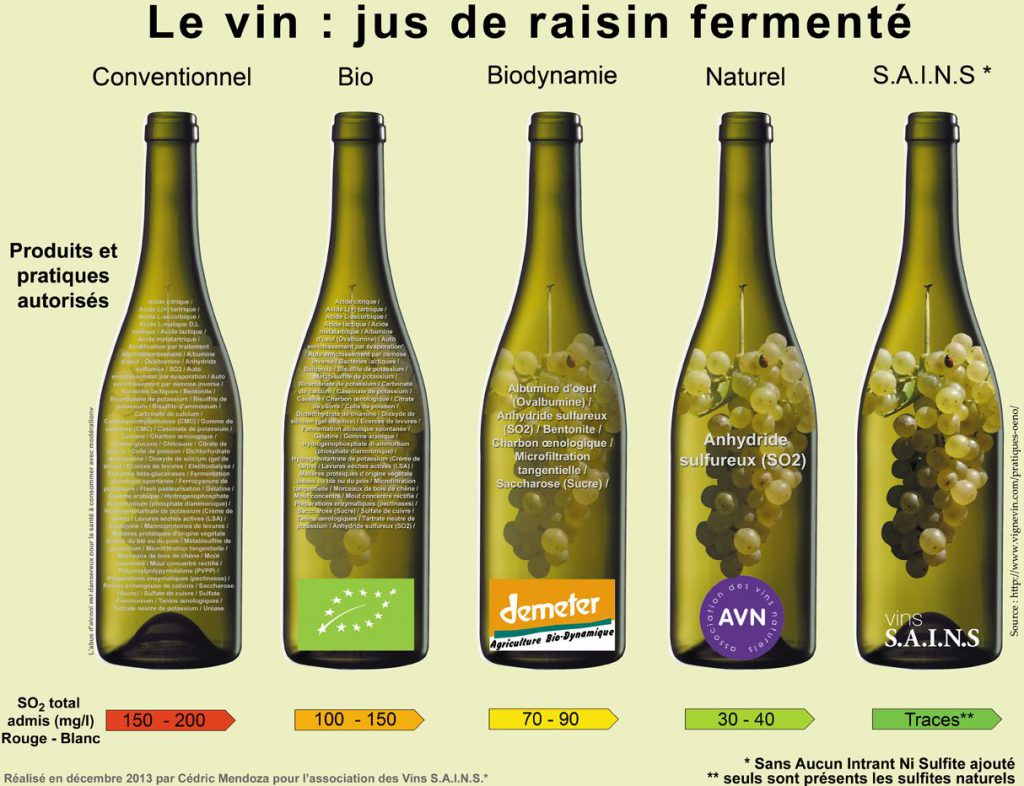BIOLOGICAL WINE
Organic wine has officially existed for a very short time (2012). Before, it only took into account viticulture and not wine making. This approach now obliges to add no synthetic treatment and insecticide in the vines and, recently, proposes to reduce (very slightly) the inputs during the vinification. On the other hand, it allows acidification, deacidification, heat treatment, the addition of tannins, the addition of wood chips, sulfur, industrial yeasts …
BIODYNAMIC WINE
The biodynamic wine pushes the organic wines approach even further. The winemakers who use this method tries to intensify the life of the soil so that there is a better exchange between the earth and the plant. For this, they use herbal preparations that infuse, energize or macerate to help the vine to strengthen and develop better (a kind of homeopathic prevention treatment). They also use the lunar calendar so that the plant, the soil and the lunar influences combine best. It is a thinker and philosopher, Rudolf Steiner (1861-1925) who established the foundations of this movement also called anthroposophy.
It allows the gluing of wine and filtration, chaptalization (addition of sugar) only for sparkling wines, but against the use of sulfur dose lower than organic wines.
NATURAL WINE
Natural wine combines these two methods but goes even further by allowing no inputs or techniques to modify the original juice, apart from sulfur … There is also another section in natural wines even more “to the endist” , wines without any inputs nor sulphites (SAINS).
Here is an example of the difference between these steps:
- Conventional wine red EU standards: 160 mg / liter of sulfur
- Red wine from organic farming: 100 mg / liter of sulfur
- Demeter red wine (biodynamic): 70 mg / liter of sulfur
- Red wine Association of Natural Wines: 30 mg / liter of sulfur
A very representative image of the various additions that are possible according to the standards, realized by the SAINS wine association:
